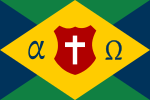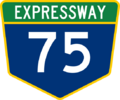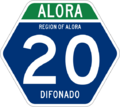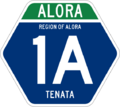Alora

|
Republic Of Alora Republikā dā Alōrā (Aloran) Capital: Mopaso City
Population: 39,585,851 (2021) Motto: "Quem dedit nobis libertas" (He has given us liberty) Anthem: O True Immortal |
Loading map... |
Alora, (English pronunciation: [ɑːlo:rə]) officially the Republic of Alora, is a federal constitutional republic in southern part of the great continent of Uletha. It consists of 23 states that are located within 3 administrative regions. The countries land area is just over 531,864 square miles (1.377 million square kilometers). The country shares its borders with Gobrassanya to the southeast on the Gobras Peninsula, UL06d in the northeast, Arsha, UL05e, and UL07d to the north and Epeltasúna and the former Celesto Republic to the west. With a population of more than 39 million people. The national capital is Mopaso City, and the largest city in Alora is Staughley which is located along the southern coast in the state of Teneco.
Alora is a highly developed country, with a strong economy and high GDP. It is a charter member of the Assembly of Nations. It also is a member of the Gobras Peninsula Free Trade Agreement, the Ulethan Alliance for Culture (UAC), the Southern Uletha Economic Cooperation Council among other international organizations.
Alora Considered a melting pot of indigenous and imigrant cultures and ethnicities, some of this is due to colonization of the countries of Alora and Takora early on in its history. The indigenous peoples of Alora are the native Aloran Peoples, the native peoples of Takora and the Gobrasi. Today native populations comprise 27% of the total population of Alora and Takora. Alora ranks high in international measures of economic freedom, standard of living, education, and human rights; and has relatively low levels of perceived corruption due to safeguards and laws passed to curtail corruption. Government structure in Alora is built on transparency and accesibility of information which is undergirded by the Aloran Federal Transparency Act of 1979.
Etymology
History
Early History
Ingerish Settlers
Alora-Takora Union
The nation of Takora became a part of Alora when it was adopted into the Union by ratification of the Aloran Unification Treaty which was passed 1949 which formed the Republic of Alora as it now exists. This treaty placed Takora as a territorial possession known as The Territory of Takora of the nation of Alora but Takora still had its own limited governance under the authority of the Aloran Constitution and Legislature of Alora. Its Capital, Takorado Served as the territorial capital. Takora is now part of the Republic or Alora and Takorado became the regional capital of Takora
Government and politics
Administrative Divisions
 | |
|---|---|
| Administrative divisions of Alora | |
| First-level | 3 regions |
| Second-level | 23 states |
| Third-level | TBD counties |
| Fourth-level | cities, towns, villages |
 See also: Administrative divisions of Alora
See also: Administrative divisions of Alora
Alora is organized into 4 levels administrative subdivisions. There are the 3 administrative regions at the highest level. The country is further divided into 23 states (or estados in castellánese speaking areas in western Takora). 11 of these states are located within the Alora region, 4 states lie within the region of Escaskia, and 9 states that lie within the region of Takora (also known as the Territory of Takora). States are further subdivided into either counties (or condados in castellánese speaking areas in western Takora). The smallest incorporated divisions are cities, towns, and villages. which may be part of larger metropolitan areas or townships. Unincorporated divisions include communities and localities.
| Regional Flag | Region | Regional Seat |
|---|---|---|
| Region of Alora | Mopaso City | |
| Region of Eskaskia | Athalan | |
| Region of Takora | Takorado |
- Regions
Regional levels of administration are managed at the national level. The regions within Alora do not have their own regional governments, constitutions, elected officials or legislative bodies and thusly are represented by the elected senators and representatives of the states which lie in each region. Regional administrators and justices are appointed by the central government at the direction of the executive branch and must be confirmed by the legislature. Regional governmental control is centralized in the capitol of Alora in Mopaso City but is also divided among administrative seats in each region which conduct the functions of regional administration in each region.
- Territorial possessions
- The Territory of Takora - was a special administrative region that also has the distinction of being a territory. The Territory of Takora was created when Takora was adopted or annexed into the Union by ratification of the Aloran and Takoran Unification Treaty in 1974. This treaty placed Takora as a territorial possession of the nation of Alora and gave Takora its own limited governance under the authority of the Aloran Constitution and Legislature of Alora. Its Capital, Takorado Served as the territorial capital until it officially became part of the Republic or Alora in 1998 and was designated as a region. Takora's status as territory is now symbolic. Takorado is the regional seat of Takora.
Constitution and government
| Government of Alora | |
|---|---|
| Federal Constitutional Republic | |
| Capital | Mopaso City |
| Head of state | |
| • President | Steffen Koch (CLP) |
| • Vice President | Lincoln Alexander (CLP) |
| • Chancellor of Congress | David Mathiasen (CLP) |
| Legislature | Aloran Federal Legislature |
| • Upper house | Senate |
| • Lower house | House of Congress |
| Judiciary | Alora High Court |
| Cheif Justice | Taylor Temesgren |
Major political parties | |
CLP Prog Free NeoG Cent Anar Ind | |
| AN, GPFTA, SUECC | |
The Aloran Constitution was ratified on September, 1 1801
The government is a representative republican form of democracy, <meaning people vote for representatives that bring the needs of their constituencies (the people) to the house and senate to be discussed. This is where proposed law and policy are made. These laws are then sent to the president to be signed or vetoed. The house and senate both have the power to overturn legislation based on a super-majority (2/3) vote of both houses in a combined vote. Constitutional Amendments are also ratified by a super-majority vote of both houses and the respective two-thirds of the state and territorial governments assemblies and senates. Once ratified constitutional amendments become law and can only be repealed by constitutional amendment process.
The president has the authority to enact temporary executive orders that expire at the end of his current term or for 2 years following his term if the president has less than 2 years left to serve. This power is given to address issues that are pressing for national security or stability however must be ratified by congressional super-majority in order to become the permanent law. Presidents are limited to a total of 3 terms in office and are elected once every 3 years by electoral college that is based on the majority vote of each state. The state or territory sends the appropriate number of electors to cast votes for each candidate based on the popular vote.
Each state has 2 senators and several congressmen based on the population and size of the territory of the state. This is calculated total population and weighted by 10% based on total square miles of the state. Territories also have representatives, but no senators.
Parties and elections
Aloran politics fall within the middle--right to center-right spectrum when it comes to political opinion and thought. By and large the country is considered to be a conservative country which is reflected in its policy, laws and penal code. The majority of Alorans belong to the Constitution and Liberty Party the mainline conservative party, and the Freedom Party which leans further to the right and is considered a fundamentalist party by some on the right and many on the left. Other political affiliations include the Progressive Party a center-left to middle-left party and the more liberal Neo-Green Party an environmentalist and revolutionist group which has been known for its activism and for acts of violence perpetrated by its more fundamentalist fringe members. Several minority parties also exist such as the [Centrist Party] a libertarian party that leans conservative on most fiscal and social issues but desires to be liberated from oppressive government regulation and prohibition of use of controlled herbal substances. The Anarchist Party is a party that opposes colonial government and desires the destruction of all government systems. and finally there are the independents that do not choose a party affiliation. Independents are not officially organized into an official party.
- Political Affiliations
| Party Name | Abbrev | Political Spectrum | Total % of registered Aloran voters |
|---|---|---|---|
| Constitution and Liberty Party | CLP
|
center-right to middle-right | 45% |
| Progressive Party | Prog
|
center-left to middle-left | 35% |
| Freedom Party | Free
|
middle-right to far-right | 10% |
| Neo-Green Party | NeoG
|
middle-left to far-left | 4% |
| Centrist Party | Cent
|
middle line | 4% |
| Anarchist Party | Anar
|
extreme-left | <1% |
| Independents (non-affiliated) | Ind
|
mostly middle line | 2% |
International relations
Military
The Unified Forces of Alora (abbrev. UFoA) are the joint military forces in Alora. the UFoA is overseen by the Department of Defense and reports directly to the President of Alora as "Commander-in-Chief" of the UDoF. The President then appoints a Secretary of Defense
The UDoF consists of 7 different forces that lie within the 4 branches of the military, which are each administered by the Department of Defense
|
|---|
Law enforcement and Crime
Geography
Climate
Economy
 See also: Economy of Alora
See also: Economy of Alora
Currency
Main Article: Aloran Talent
The currency of Alora is the Aloran Talent (₮) (ISO currency code: ALT). The Talent is divided into 100 Sheks. Coins minted include 1-, 2-, 5-, 10-, 20- and 50- Shek coins and half-, and 1- Talent coins. Banknotes include 1-, 2-, 5-, 10-, 20-, 50-, 100-, and 200- Talent banknotes. Valuation of 1.985 USD. 500-, 1000-, and 2000- banknotes were also in circulation but were rare. The advent of electronic bank transfers, debit/credit cards, and Wire transfers available for large monetary transfers has made the banknotes less needed. A 3 talent note was also in use until 2001 when it was also retired, there are still many of these notes in circulation. Older archaic denominations include a 1/3 Talent coin which is no longer in use but is highly collectible.
Cash Prices are expressed in decimals to two places (₮1.50) Some representatives in the Alora Legislature proposed a cashless system in 1985 but that proposal died in closed legislative sessions due to extreme opposition to the plan. There has been rumblings that some legislators are working in secret again to revive the plan under a different name and present it to the legislature again in 2020. Opposition is again expected to be strong and it is unsure if Alorans will ever be willing to give up their Physical currency.
Ebux is another form of currency circulated in Alora and it is a completely electronic bit based currency run by a private coalition of Aloran businesses to provide an alternate means of purchasing and currency for people in the southern Uletha. Ebux wallets are available on the internet and can be easily loaded or spent at participating merchants by scanning a target code.
Transportation
 See also: Transportation in Alora
See also: Transportation in Alora

|

|

|
| Expressway marker | Class A Trunk Highway | Class C Trunk Highway |
Highways
Alora has both national and state highways]]. national highways are numbered differently from the expressway system and odd numbered roads travel east-west and even routes travel north-south to avoid confusion with the expressway system. State Highways are identified by their own markers and have a two letter prefix that corresponds to their state abbreviation. State routes are marked with a unique route sign depending upon the state. A generic state marker exists for states that do not utilize their own custom route marker. States are responsible for the construction, maintenance and upkeep of their national and state highways. The central government has jurisdiction over the assignment, numbering and routing of national highways. The central government also subsidizes construction of new and existing highways at 90% leaving the state to pay the 10% share. The Alora government does a 50/50 cost split on the construction and upgrade of state highways.
Aloran Expressway System
Alora has a system of highways and expressways that provide transportation for motor vehicles and commercial freight traffic. The most advanced system is the Aloran Expressway System which consists of a fully access-controlled grade-separated freeway system, most of which is toll-free with only limited toll crossings. Expressways are identified with the prefix "E-' before the route number (ie. E-45 or E-99). Sections of the Aloran Expressway System that have not been updated to freeway status are listed as trunk roads and identified by the prefix "A-" or "C-"before the route number such as A-5 or C-8 (depending on the stage of development) which when upgraded will eventually become E-5 once it is converted to a full freeway. Highways are numbered from E-10 in the north to E-90 in the south and E-15 in the west to E-95 in the east. Odd numbered highways travel north and south and even highways travel east and west. Highways E-1 through E-9 are diagonal highways that connect major cities or follow special important routes.

|

|

|
| Primary NHS marker | Alternate NHS marker | State Highway (Generic) |
Rail
Alora has a growing network of railways across the nation used for freight and passenger operations throughout the country. Several railroad operators share the national track network providing freight services across the country. In Alora track mileage and land is owned by the government and is managed by the National Railroad Administration (NRA). Freight operators are then assigned an area of responsibility over a particular area and are responsible for maintenance, upkeep and development of their assigned part of the network. Each rail operator then receives grants from the federal government to subsidize the cost of operations since the network is owned by the government.
Major railroad companies operating in Alora:
Passenger Rail
Passenger rail connects many of the major cities and towns across Alora. This network is still under development in more rural areas making Alora a car-centric country.
Mass Transit
Larger cities such as Mopaso City, Takorado, Staughley and Santa Carlina have metro systems that provide rapid transit. These cities also have extensive bus networks as well with many routes running frequently during peak periods. In these larger cities it is easier to get around without a vehicle. However, with mass transit being expensive only the larger population centers have developed networks. Other major cities and larger towns rely on locally operated bus systems in order to provide public transportation. Longer Distance Bus operators also exist in Alora however most of these are private companies that may receive some governemnt subsidies but are not government run.
High Speed Rail
Currently there are 2 high speed rail operators in Alora. Alora HSR is a public private partnership railway with service connecting Takorado, Tomale, Mopaso City, Santa Carlina, Staughley, Santa Maria and Kenrich (Gobrassanya). GoHSR also operates within the country and connects from Santa Carlina, Palm Beach and Malinton before continuing eastward into Gobrassanya. GoHSR also operates trackage through the state of Alaria to connect between Phailoon City and Carratta
Ports
Alora maintains ports in many cities along the coast. The highest volume of port operations in Alora are done in Staughley due to its strategic location along the Asperic Ocean and the fact that it is a protected harbor that it protected by barrier islands to the south. Additional port cities along the Asperic Coast include: Nalmos City, Adomaka, Nolexo City, Pellahatchee, Nicoa and Licoa.
Significant marine port operations also occur in the Gulf of Alora in Santa Carlina, Mantan, Malinton, Tomale and Mopaso City due to their strategic location along the Gulf of Alora. Alora also operates one inland port at Gallaton in the Grand Lakes Region which is reached via the Arcois Ship Canal which traverses through Gobrassanya to the gulf of Alora Alora also has ports in the Mediterranean Sea with Escuderos and Puerto Domenica as major port cities in western Takora.
Energy
Alora has many sources of energy within the country and has also committed to a long term effort to reduce harmful emissions nationwide to half what they currently are by 2040. Aloran citizens embrace the use of energy conservation and ecologically friendly sources of energy ("green energy"), recycling and sustainability efforts. This effort has been largely pushed by the efforts of the Neo-Green party through the congress and senate via lobbying efforts. High emission power generation stations also must adhere to tough restrictions regarding emissions and have been equipped with emission control systems that significantly reduce the harmful effects of the emissions. The Aloran government has also passed a resolution phasing out coal fired power plants completely by the year 2035. Due to significant water resources Hydro-electric power is widely used in Alora and is the predominent source of sustainable electricity provided in the country. Alora also uses other forms of sustainable energy including solar, wind, and tidal generation.
Electricity
Alora provides its electric power as A/C (alternating current) at 60Hz. Most residential and small commercial establishments use single phase power at 240Hz. Industrial power can range from 240v all the way up to 960v three phase power based on the needs of the company. Alora has a strong electric power infrastructure in place with many generation stations located across the country with a strong electrical distribution backbone with built in redundancies. Power outages while common during extreme weather, are rare otherwise due to built in redundancies and also due to the power networks in cities being largely underground.
Main sources of electric power in Alora
- Hydroelectric
- Solar
- Wind
- Geothermal
- Tidal
- Nuclear (clean nuclear only)
- Coal (being phased out by 2035)
- Oil (banned in Alora the last oil-fired plant closed in 1997)
- Natural Gas (emmision restrictions in place)
Hydrocarbons
Hyrdocarbons are still a main energy resource for Alora. Most hydrocarbor use in the country is in the form of petroleum products which are refined into a multitude of products. Most energy consumption of hydrocarbons in Alora is done in the form of fuels such as diesel, gasoline (petrol), fuel-oils, propane, coal and methane gas. Alora has been working on reducing reliance on hydrocarbons as a source of energy by subsidizing electric energy and the use of hybrid and electric powered vehicles. Hydrocarbons can also be used for a variety of other products such as plastics, waxes, petroleum jelly and even food additives. Most hydrocarbons used in alora are in the form of refined petroleum products but coal is also converted into methanke gas and gasoline to help with the supply.
Environmental efforts in Alora have been working towards eliminating the use of dirty fuels completely by 2040, namely the use of coal. As the country has been reducing coal use the number of exports of coal to other countries has increased. the legislature has been considering placing a moratorium on future mining of coal resources but that has faced opposition of the coal industry who look to profit from the lucrative exportation of coal around the world.
Nuclear
Alora does allow the use of nuclear energy within the country, however these facilities must be meltdown proof using fuel supplies that are safe to handle with normal precautions and do not require special storage once fuel is spent. The Aloran Technology and Research Institute (ATARI) worked alongside the nuclear energy industry to develop encased fuels that cannot meltdown which eliminates the need for special containment facilities and reduces the risk of nuclear waste. This was a compromise met between the nuclear industry and the government which had sought to ban nuclear energy altogether due to the waste created along with the risk of radiation pollution. Currently Alora only has 4 nuclear power plants. 2 in the Takora region (San Carlos, TK and Tahlio, WT), 1 in the Escaskia region east of Athalan and 1 in the Alora region near Phipps Beach on Nolexo Island.
Culture
| Demographics of Alora | |||||||||||||||||||||||||||||||||||||||||
|---|---|---|---|---|---|---|---|---|---|---|---|---|---|---|---|---|---|---|---|---|---|---|---|---|---|---|---|---|---|---|---|---|---|---|---|---|---|---|---|---|---|
| Demonym | Aloran | ||||||||||||||||||||||||||||||||||||||||
| Official languages | Ingerish, Castellánese, Aloran | ||||||||||||||||||||||||||||||||||||||||
| Recognized minority languages | Takoran, Gaerman, Gobrassian | ||||||||||||||||||||||||||||||||||||||||
Ethnicities | |||||||||||||||||||||||||||||||||||||||||
| |||||||||||||||||||||||||||||||||||||||||
Religion | |||||||||||||||||||||||||||||||||||||||||
| |||||||||||||||||||||||||||||||||||||||||
| Literacy | |||||||||||||||||||||||||||||||||||||||||
| Life expectancy | |||||||||||||||||||||||||||||||||||||||||
Language
Ingerish is the official language and the primary language of the Republic of Alora and is used in all government offices and for official business. Other languages spoken in Alora and Takora include: Ingerish, Aloran, Takoran, Gobrassian, Gaerman, Castellánese, Khaiwoonese, Several native languages spoken by Uri people and the Apeha Nation, as well as several other native tongues of indiginous peoples who have called Alora and Takora their homeland.
Language History
Ingerish became the primary lingua franca as a result of settlers from ingerland and other ingerish speaking countries in northern Uletha that came and settled the area. Eventually as these settlers became the larger ethnic group, Aloran started to become a minority language and the government eventually made ingerish the official language of the country in 1902 to the protest of Alorans who considered this their homeland. In 1974 Takora became part of Alora. Takora was also heavily settled by white settlers who spoke ingerish but also castellánese settlers that had settled in the western part of the country that had migrated from Castellán. Takoran was also spoken by the indigenous people of the homeland. As a result Takora prior to becoming part of Alora had three official languages. ingerish, castellánese and takoran. At the ratification of the unification treaty in 1974 Takora Territory maintained its three official languages while Alora continued recognizing only ingerish as its official language. During the reorganization of Alora, the territory of Takora became part of Alora in 1998 when it became one of three regions of the republic. During the reorganization a push was made to recognize their official languages to also be recognized as official in the entire country. Ultimately lawmakers and lobbyists were successful and takoran and castellánese officially joined ingerish as official languages in Alora. This left only aloran as the only homeland language not officially recognized. Growing political pressure over the next several years led the Aloran government to add aloran as an official language in 2001 nearly 3 years later. As of now Alora has 4 official languages and government agencies were required to make changes to accommodate the changes including government websites, publications, and forms. Ingerish still is the majority language spoken except in the far western states or Arratas, Tegugeta West Takora and Iaria where the primary language spoken is castellánese.
Ethnicity
Aloran Ethnicities
Takoran Ethnicities
Takora like the rest of Alora is a very culturally diverse place with various nationalities both native and immigrant. The earliest settlers of the area were the Uri Natives. Other early settlers were the nomadic peoples that eventually became known as the Takor, the Native Gobrasi who migrated into the area in search of agricultural lands. the 18th century saw the largest influx of immigrants from various places. White poplations from Gaerman and Ingerish regions settled in along with the Castellanese these make up the largest part of the population. Today's population encompasses offspring of these settlers and are known as white native born Takoran, Aloran or Gobrassian people. Additionally a small minority of Khawoonese people have also made Takora their home.
Takor/Native Takoran
the Takor people settled mostly in the coastal areas but were known to migrate into the desert areas at times, especially during monsoon seasons. Today's native Takoran population can trace its roots back to the earlyu Takor nomads. While there is little historical evidence.
Indigenous Uri People
The Uri are the oldest to inhabit the region and initially were nomadic like the Takor but eventually settled down in the river valleys in the eastern and southern part of Takora. Some archaeological and literary historical records indicate that the Uri and Takor battled with each other on occasion. As a result the two groups usually kept to their own regions. after the battled it is thought that to keep the peace the Uri eventually settled in the area in and around the city of Perdió in what is now southeastern Adenia. However the Uri struggle for land was fraught with continual misfortune as settlers came in and pushed the Uri off their lands. The Uri put p a defense for their land and the White and Castellanese settlers saw their aggression as savagery and fought back banishing them from their native lands. Eventually the government instituted a large reservation area for native Uri to settle in however this land is somewhat barren without natural watercourses and rivers. The Uri struggled to grow crops and survive. The only thing they were able to do well was to raise range animals which they wre eventually able to sell to sustain themselves. Today the Uri people have irrigation systems partially subsidized by the government and are now avid farmers and ranchers. Many Uri craftsmen have also started making traditional Uri wares to be sold at reservation outposts and have become quite popular with tourists.
White Settlers
Religion
The official religion of Alora is Known as The Way or the Christic Movement. Followers of this faith are known as "Followers". While the adoption of The Christic Movement as the official religion of Alora was established by the constitution it is only ceremonial in nature and the government offers no monetarily support nor does it collect any royalties, taxes, or tributes from churches or any other religious organization. while the government does not recognize other religious belief systems there is a policy that supports freedom of religion and they are generally tolerated with a very few exceptions (such as religious groups that would cause harm to life and property). Prior to this the "Christic Movement" had been made the official religion of the country but there were issues regarding its establishment as the official religion of the government and the government sought control of churches and church activities and used it as a source of generating revenue for the government during the years of monarchical reign (1599 to 1800) and the confiscation of church wealth during the 300 years of feudal government that proceeded that. These periods are known by Christic Followers as the "History of Wrongs" and lead to the current constitutional protections that exist for the Christic Movement and by default all other religions as well. Even though the government has officially recognized the Christic Movement as its official religion it has no power of enforcement or taxation upon churches or religious organizations.

